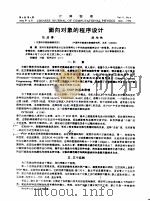《面向对象数据库》
| 作者 | 霍拉法斯(Chorafas,Dimitris N.),斯坦曼 编者 |
|---|---|
| 出版 | 北京:清华大学出版社 |
| 参考页数 | 318 |
| 出版时间 | 1994(求助前请核对) 目录预览 |
| ISBN号 | 7302014973 — 求助条款 |
| PDF编号 | 87617898(仅供预览,未存储实际文件) |
| 求助格式 | 扫描PDF(若分多册发行,每次仅能受理1册) |
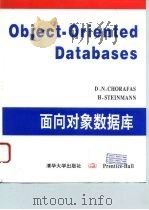
CHAPTER 11
WHAT IS MEANT BY OBJECTS?1
1-1£(r)Introduction1
1-2£(r)Information Elements in an Object Landscape4
1-3£(r)Objects in a Dynamic Operating Environment8
1-4£(r)Understanding the Way Objects Work11
9-7£(r)Using the Blackboard for Interfacing to the Database12
1-5£(r)The Concept of a Class and its Implications13
1-6£(r)Semantics and the Process of Instantiation16
1-7£(r)Object-Oriented vs£(r)Record-Based Models18
1-8£(r)Fine-Tuning the Class Characteristics21
CHAPTER 224
THE CONCEPT OF INHERITANCE:24
A CORNERSTONE IN OBJECT SOLUTIONS24
2-1£(r)Introduction24
2-2£(r)Inheritance,Specialization,and Generalization25
2-3£(r)Metarules,Constraints,and Equilibration28
2-4£(r)The Concept of Mapping30
2-5£(r)Data Abstraction and Procedural Abstraction32
2-6£(r)Object Encapsulation and Polymorphism34
2-7£(r)Concurrency and Dynamic Binding36
CHAPTER 338
CONSTRUCTING THE OBJECT-ORIENTED38
ENVIRONMENT38
3-1£(r)Introduction38
3-2£(r)Handling Object-Oriented Messages40
3-3£(r)Message Passing and Linguistic Requirements41
3-4£(r)Referential Integrity and Garbage Collection43
3-5£(r)Objects and the Trend Towards Parallelism46
3-6£(r)Multimedia,Versioning,and Ad-Hoc Queries47
3-7£(r)Serving the Enduser through Visualization49
CHAPTER 452
4-1£(r)Introduction52
CHALLENGES WITH OBJECT-ORIENTED DATABASES52
4-2£(r)Database Access and Query Relevance53
4-3£(r)Hypermedia and Semantic Modeling57
4-4£(r)The Overriding Need for Software Reusability60
4-5£(r)The Design ofReusable Modules62
4-6£(r)Software Reuse and Cultural Issues64
5-1£(r)Introduction66
WHY AN OBJECT DATABASE?66
CHAPTER 566
5-2£(r)A New Look at the Database Utility67
5-3£(r)The Role of Metamodels in Virtual Homogeneity70
5-4£(r)Applications Domains for Object Databases72
5-5£(r)Handling ofAd Hoc Queries74
5-6£(r)Is Complexity the Best Solution?76
CHAPTER 680
OBJECT-ORIENTED PARADIGMS AND LONG80
TRANSACTIONS80
6-1£(r)Introduction80
6-2£(r)An Object-Oriented Paradigm in the Database81
6-3£(r)Database-Wide Object Identification82
6-4£(r)Object Classification in a Distributed Environment84
6-5£(r)Transaction Processing in an Object Database86
6-6£(r)Making Sense of Database Heterogeneity87
6-7£(r)Handling Long Transactions89
APPROACHES TO OBJECT-ORIENTED92
PROGR AMMING92
7-1£(r)Introduction92
CHAPTER 792
7-2£(r)What is Object-Oriented Programming?93
7-3£(r)Algorithmic and Heuristic Approaches94
7-4£(r)Object Programming and Metaprogramming96
7-5£(r)Concepts Associated with New Programming Policies98
7-6£(r)A Modern Methodology versus the Waterfall Model101
8-1£(r)Introduction104
META-PROGRAMMING IN AN OBJECT104
ENVIONMENT104
CHAPTER 8104
8-2£(r)Object-Oriented Linguistic Solutions105
8-3£(r)Object SQL£¨OSQL£(c)107
8-4£(r)OSQL Primitives and Functions109
8-5£(r)Dynamic Processing of Object Properties111
8-6£(r)An Artifact in the Object Environment114
8-7£(r)Physical Memory,Logical Memory,and Programming116
CHAPTER 9119
OBJECTS AND THE PROCESS OF PROTOTYPING119
9-1£(r)Introduction119
9-2£(r)The Role of Prototyping in an Object Environment120
9-3£(r)Performance,Content,and Usage121
9-4£(r)Prototype:A Software Emulator123
9-5£(r)Do Prototypes,Not Stereotypes126
9-6£(r)Object-Oriented Blackboards127
CHAPTER 10132
PROTOTYPING THE DISTRIBUTED SOLUTION132
10-1£(r)Introduction132
10-2£(r)Prototypes and Software Quality133
10-3£(r)Graphical Approaches to Aid Human-Machine135
Communication135
10-4£(r)Developing Graphics Interfaces137
10-5£(r)The Role of Knowledge Abstraction138
10-6£(r)Goals ofKnowledge Elicitation139
10-7£(r)The Ptech Shell141
10-8£(r)Classification and Method Selection143
CHAPTER 11145
THE NUTS AND BOLTS OF OBJECT145
PROGRAMMING145
11-1£(r)Introduction145
11-2£(r)Basic Concepts of Object Programming146
11-3£(r)Typing and Instantiation148
11-4£(r)Role of a Data Manipulation Language150
11-5£(r)C??for Object-Oriented Software152
11-6£(r)Emerging Features of C??154
11-7£(r)Program Design With C??155
12-1£(r)Introduction158
CHAPTER 12158
SPATIAL AND TEMPORAL SEMANTICS158
12-2£(r)Time and Space159
12-3£(r)Finite or Infinite Space?160
12-4£(r)Structure and Behavior162
12-5£(r)Computer-Generated Space164
12-6£(r)Logical and Physical Space167
CHAPTER 13169
HANDLING TEMPORAL DATABASES169
13-1£(r)Introduction169
13-2£(r)Modeling Temporal Data170
13-3£(r)Decision Space and Object Orientation171
13-4£(r)Establishing and Maintaining Temporal Relations173
13-5£(r)Temporal Logic174
13-6£(r)Patterns in Semantic Representation175
13-7£(r)Patterning and Fuzzy Engineering178
CHAPTER 14181
BEYOND RELATIONAL DATABASE MANAGEMENT181
SYSTEMS181
14-1£(r)Introduction181
14-2£(r)Multidatabases182
14-3£(r)Knowledge Engineering and Semantics183
14-4£(r)Commodity Software for Heterogeneous Databases185
14-5£(r)Architecturing a Long-Transaction Environment186
14-6£(r)Why are Companies Interested in Object DBMS?188
14-7£(r)Integrative Capabilities and Semantics Content190
14-8£(r)Synchronization of Updates191
CHAPTER 15194
LIMITATIONS IN RELATIONAL DATABASES194
15-1£(r)Introduction194
15-2£(r)Strengths and Weaknesses of Relational Databases195
15-3£(r)Contributions of the Relational Model198
15-4£(r)Premises of Relational and Object-Oriented Solutions200
15-5£(r)The Quest for Rigorous Solutions202
15-6£(r)Consistency,Concurrency,and Storage Hierarchy204
15-7£(r)Physical Aspects of a Multidatabase206
CHAPTER 16210
DBMS FOR OBJECT-ORIENTED DATABASES210
16-1£(r)Introduction210
16-2£(r)The Notion ofa Modern Database Management System212
16-3£(r)The Entity-Relationship Model214
16-4£(r)Characteristics of Object-Oriented DBMS215
16-5£(r)Reasons for the Advent of Object DBMS218
16-6£(r)Choosing Among Object-Based Commodity Software219
16-7£(r)Merging Data Processing and Knowledge Engineering219
in Database Management222
16-8£(r)The Big Computer Companies Join the Object222
DBMS Market224
CHAPTER 17227
ONTOS AND GEMSTONE227
17-1£(r)Introduction227
17-2£(r)The Ontos Approach to Database Management228
17-3£(r)Benefits from the Implementation ofan Object DBMS230
17-4£(r)Features ofa Second Generation Object DBMS232
17-5£(r)The Gemstone Approach to Database Management234
17-6£(r)The Virtual Schema Designer236
CHAPTER 18238
VERSANT AND OBJECT STORE238
18-1£(r)Introduction238
18-2£(r)Architecture ofthe Versant Object DBMS239
18-3£(r)Designer,Repository Builder,and Administrator241
18-4£(r)Distributed Characteristics and the Versant Repository243
18-5£(r)The ObjectStore DBMS245
18-6£(r)Minimizing Overhead Requirements247
18-7£(r)Collection Management and Directory Control249
19-1£(r)Introduction251
CHAPTER 19251
OBJECT ODB AND PEGASUS251
19-2£(r)The Open ODB Object DBMS252
19-3£(r)Roles ofthe Object Manager254
19-4£(r)Access Flexibility and SQL Extensions256
19-5£(r)Pegasus,for Transdatabase Solutions258
19-6£(r)Heterogeneous Object SQL260
19-7£(r)Cooperative Information Management261
20-1£(r)Introduction261
CHAPTER 20264
OBJECT-ORIENTED DBMS MADE IN JAPAN264
20-2£(r)An Overriding Demand for Practical Applications265
20-3£(r)The Mandrill Approach to Multimedia Database Management268
20-4£(r)Generalization and Specialization in Mandrill270
20-5£(r)Object Manager,Object Selector,and Methods Trigger273
20-6£(r)Object Database Management by Odin274
20-7£(r)The Management Information Base£¨MIB£(c)by Mitsubishi277
CHAPTER 21280
OBJECTS AND DATA LEVEL PAR ALLELISM280
21-1£(r)Introduction280
21-2£(r)Parallel Data Algorithms and Architectures281
21-3£(r)The Practical Efiects ofParallelism283
21-4£(r)Dataflow and Interdatabase Communications285
21-5£(r)Recursive Data Parallelism287
21-6£(r)Associative Storage and Array Logic290
21-7£(r)Can Classical DP Answer the Challenge?291
CHAPTER 22294
THE CHALLENGE OF HIGH PERFOR MANCE294
COMPUTING294
22-1£(r)Introduction294
22-2£(r)Objects in a Hypercube Architecture295
22-3£(r)Solutions for Input/Output-Intensive Applications296
22-4£(r)Data Parallelism on a Hypercube297
22-5£(r)A Hypercube Database Management Solution299
22-6£(r)Spatial Object Management Enriched by Knowledge299
Engineering301
22-7£(r)New Perspectives in Computation303
INDEX305
ACKNOWLEDGMENTS313
1994《面向对象数据库》由于是年代较久的资料都绝版了,几乎不可能购买到实物。如果大家为了学习确实需要,可向博主求助其电子版PDF文件(由霍拉法斯(Chorafas,Dimitris N.),斯坦曼 1994 北京:清华大学出版社 出版的版本) 。对合法合规的求助,我会当即受理并将下载地址发送给你。
高度相关资料
-
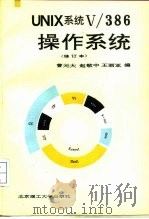
- UNIX系统V/386操作系统
- 1992 北京:北京理工大学出版社
-

- 面向对象数据库原理与应用
- 北京希望电脑公司
-
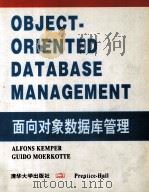
- 面向对象数据库管理 在工程及计算机科学中的应用
- 1994 清华大学出版社 Prentice-Hall.Inc
-

- 面向对象数据库的程序设计 英文版
- 1989 Springer-Verlag
-
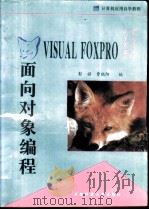
- Visual FoxPro 3.0面向对象编程
- 1995 成都:成都科技大学出版社
-
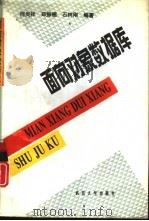
- 面向对象数据库
- 1995 武汉:武汉大学出版社
-
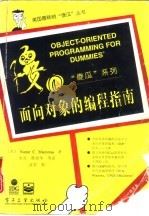
- 面向对象的编程指南
- 1996 北京:电子工业出版社
-

- 面向对象数据库
- 1998 北京:高等教育出版社
-

- 面向对象程序设计语言
- 1993 北京:石油工业出版社
-
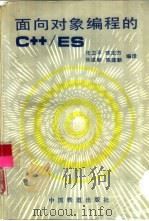
- 面向对象编程的C++/ES
- 1992 北京:中国铁道出版社
-

- 面向对象程序设计
- 1994 北京:电子工业出版社
-
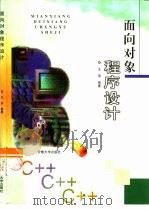
- 面向对象程序设计
- 1999 合肥:安徽大学出版社
-

- 面向对象的分析
- 1992 北京:北京大学出版社
提示:百度云已更名为百度网盘(百度盘),天翼云盘、微盘下载地址……暂未提供。➥ PDF文字可复制化或转WORD

